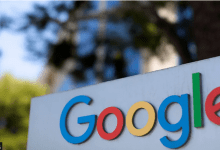
What is network slicing, and how can it make sci-fi a reality?
Network slicing is a new concept which is only possible on a 5G (opens in new tab) Standalone network , and it will have an almost revolutionary impact on how consumers interact with the digital world.
Firstly, let’s outline what Network Slicing actually is.
Network slicing
Network Slicing allows telecoms companies like Vodafone to create several different virtual networks on the same physical network. It is only possible when you have installed a 5G specific core (the brains of our network). In the 4G world, the network was a one-size-fits all experience. That was perfect for the way we used connectivity in the past, but it will not work for 5G. 5G promises different experiences which can only be delivered by configuring the network in different ways.
For example, the network configuration to deliver a bufferless video streaming experience is different to one to support smart meters at scale, or self-driving vehicles. For bufferless video, you need the network to guarantee download speeds above a certain threshold. But for smart meters across the UK, we need to configure the network to support many more devices than possible today. And for self-driving vehicles, you need the latency of the network (in other words, how quickly the network reacts to commands) to be faster than the human brain processes information.
These are three different characteristics, but trying to configure the network to accommodate all three at the same time is not possible.
If you have every smart meter connected to the network at the same time, this could cause network congestion, meaning download speed and latency would be impacted. By facilitating smart meters, you would impact the performance of live streaming and self-driving vehicles.
The role of network slicing
Network Slicing allows the creation of several virtual networks that sit on the same physical infrastructure. Most importantly, one slice has no impact on any other. By applying this idea to our network, you can allow for different configurations without having to compromise on the delivery on a specific use case. In the future, we could have one network slice reserved for general smartphone activity, one for self-driving vehicles and one for Internet of Things (IoT) devices like smart meters. We could also reserve a slice for the emergency services and for businesses to better enable remote working.
What is most important about network slicing is that it offers the opportunity for those who think a bit different to bring their ideas to life.
If a blue-sky thinker is no longer limited by the network, who knows what they could come up with. No-one realized how much we wanted Uber or Deliveroo prior to 4G (affordable mobile internet made this idea possible), so who knows what the innovators of tomorrow could come up with.
Twenty years ago, science fiction movies use to paint an image of the future that no one believed would be possible. Phone calls would be replaced with holograms, we’d allow computers to drive our cars, AI programs would do our shopping for us, and robots would deliver packages to our front door. Of course, none of these ideas have been brought to life in the way they have on the silver screen, but there are trials underway to make them possible. And with Network Slicing capabilities, we can take these ideas from the lab to the real-world.
This might seem like an overly technical concept for consumers to care about, but it is a critical component of the 5G Standalone landscape that will ensure these futuristic technologies are not actually that far away. Bill Gates famously said: “Most people overestimate what they can do in one year and underestimate what they can do in ten years.” With Network Slicing enabling the weird, wacky and wonderful, it does make you think what the world will be like in a decade from now.
By Andrea Dona







![[1/3]An AI (Artificial Intelligence) sign is seen at the World Artificial Intelligence Conference (WAIC) in Shanghai, China July 6, 2023. REUTERS/Aly Song/File Photo Purchase Licensing Rights, opens new tab](https://www.ghanaiantimes.com.gh/wp-content/uploads/2024/03/Screenshot-2024-03-11-at-09-10-00-AI-talent-war-heats-up-in-Europe-e1710148354659-220x150.png)